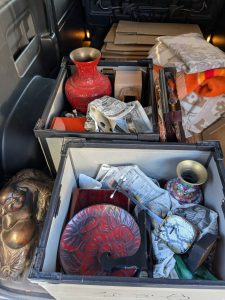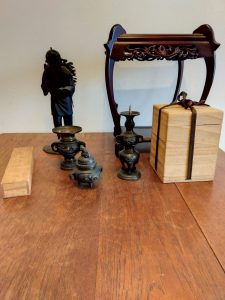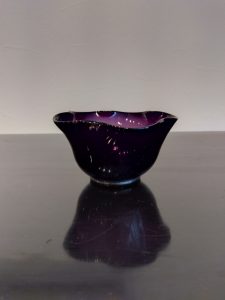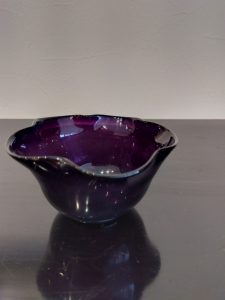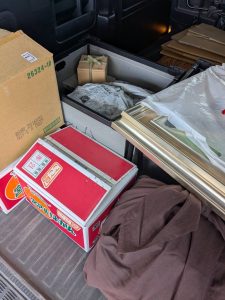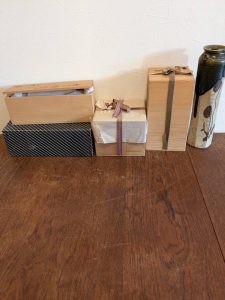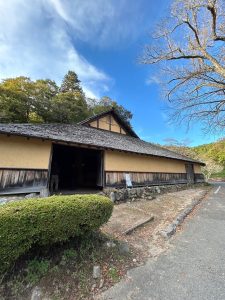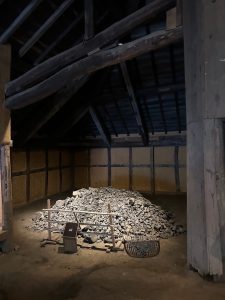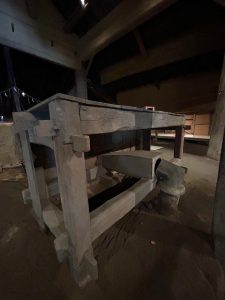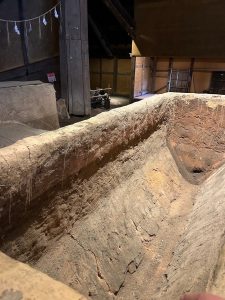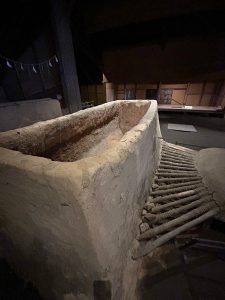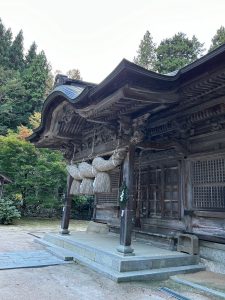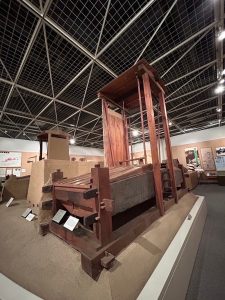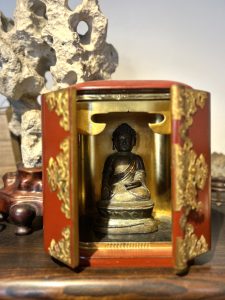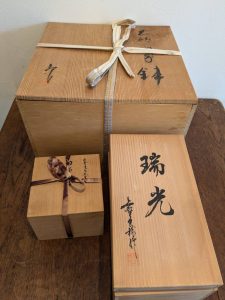自分でできるのがよいですね(愛知県名古屋市千種区姫池通 骨董買取 古美術風光舎)
2024.12.08
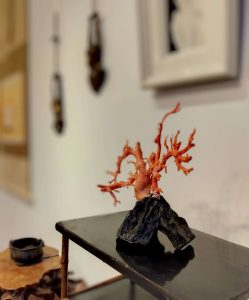
名古屋では知らない人がいない喫茶店「珈琲所 コメダ珈琲店」。東京都内でも50店舗を超えているようなので、「見たことある」「たまに行く」という方も多いのでは。名古屋のローカル喫茶店だったコメダはいつのまにか全国制覇(?)を達成するまでになったのかと感慨深いものがあります。
コメダの特徴は、なんといってもモーニングですね。ドリンクいずれかを注文すると、ローブパンまたは山食パン(トースト)のどちらか1つ無料でついてきます。しかもパンのトッピングには「バター または マーガリン」「いちごジャム」「ぬる豆乳」のひとつがチョイスすることができ、パンの他には定番の「ゆで卵」「たまごペースト」「小倉あん」もひとつついてきます。
名古屋出身者はコーヒー1杯で無料の朝食を食べられるこのモーニングというメニューが当たり前だと思って成人するのですが、他県に引っ越して初めて、それが名古屋以外では当たり前ではないことに気づきます。
そのコメダに、甘味処があるのはご存知ですか?そのお店「おかげ庵」はコメダ珈琲店が運営する和風甘味喫茶の業態。ほぼ愛知県にしか店舗がないレアなお店。名古屋人であるスタッフT、先日初めて訪れました。
店内はコメダと同じくログハウス調の造り。見た目的に異なるのはソファーの色が赤ではなく緑になっているということぐらいでしょうか?メニューはコメダとは違っていて、甘味やドリンク、食事メニューまで和風のもので統一されています。しかし一部コメダでおなじみのメニューのアレンジ版もあったりして、コメダによく行く人も楽しめるようになっているんですよ。
「おかげ庵」に行ったらぜひオーダーしたいメニューが、『だんご三昧』。(私は甘いものが苦手なので、お醤油のお団子を注文しましたが…)
真っ白なお団子と醤油、きなこ、あんこがついてくるのですが、これを実は、テーブルで自分で焼いて楽しむことが出来るんです。
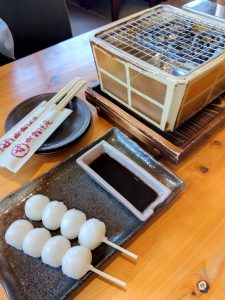
専用の焼き台にお団子をのせて、しっかり焼き目がついてくるまで待ち裏面にひっくり返します。両面が焼けたらまずお醤油に浸します。浸した醤油団子はまた焼き台にのせて2度焼きしたら完成です!
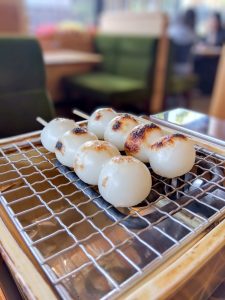
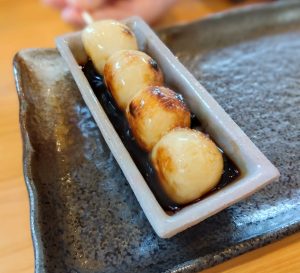
焼き網にくっつかないコツは、しばらく表面をあぶってから網の上にのせることだそうですよ。
きなことあんこは焼けた団子を蜜に浸したのち、きなこ/あんこをつけて食べればOK!どれもホクホクで香ばしいです。焼き物は他にも五平餅や大福、いそべ焼もあるのでお好みに合わせて楽しめますよ。
コメダでおなじみの「あのメニュー」の和風アレンジ版もあります。あつあつでサクサクのデニッシュパンの上にたっぷりのソフトクリームがのっている『シロノワール』の和風のアレンジ版『抹茶シロノワール』。抹茶ソフトの上に黒蜜をたっぷりかけていただきます。今、季節限定で東京バナナとコラボのシロノワールもありました。
もちろんモーニングもありますよ。ドリンクを頼むだけでおにぎりとお味噌汁が付くセットもあるんです。
大人もワクワクできるこのお団子セット、自分で焼けてアツアツの焼き立てが食べられるのは良いのですが、焼くのに集中して会話が無くなってしまうので要注意です。
ではでは、また。
Coffee shop Komeda Coffee Shop is a well-known coffee shop in Nagoya. There are more than 50 stores in Tokyo, so there are probably many people who have seen or occasionally visit the store. I wonder how Komeda, which was once a local coffee shop in Nagoya, has somehow managed to conquer (?) the entire country. It is impressive to think that Komeda, once a local coffee shop in Nagoya, has now conquered (?) the whole country.
The most distinctive feature of Komeda is its morning service. When you order a drink, you get either loaf bread or toasted mountain bread for free. In addition, you can choose one of the following toppings for your bread: butter or margarine, strawberry jam, or wet soy milk.
People from Nagoya come of age thinking that this morning menu, which includes a cup of coffee and a free breakfast, is the norm, but it is not until they move to another prefecture that they realize that it is not the norm outside of Nagoya.
Did you know that Komeda has a sweet shop? The store “Okage-an” is a Japanese-style sweet cafe operated by Komeda Coffee Shop. It is a rare store that is almost exclusively located in Aichi Prefecture. Staff T, a Nagoya native, visited there for the first time the other day.
The interior of the store is built in the same log house style as Komeda. The only difference in appearance is that the sofas are green instead of red. The menu is different from that of Komeda, and is unified with Japanese-style items, from sweet and beverage items to the food menu. However, there are also some arranged versions of familiar Komeda menu items, which can be enjoyed by those who often visit Komeda.
One menu item that you should definitely order when you visit “Okage-an” is “Dango Sanmai. (I ordered the soy sauce dango because I don’t like sweets…)
It comes with pure white dango, soy sauce, soybean flour, and red bean paste, but you can actually bake your own dango at the table.
Place the dumpling on the special grill and wait until it is well browned, then flip it over to the other side. When both sides are done, dip the dumplings in soy sauce. The soaked dumplings are placed on the grill again and baked twice before completion!
The trick to keep the dumplings from sticking to the grill is to grill the surface for a while before placing them on the grill.
For kinako (soybean flour) and anko (sweet red bean paste), dip the grilled dumplings in the honey and then dip them in the kinako/anko before eating! You can also enjoy other baked items such as Gohei-mochi, Daifuku, and Isobeyaki, depending on your preference.
There is also a Japanese version of “that menu” that is well-known at Komeda. The “Matcha Shironoir” is a Japanese version of the “Shironoir,” a hot, crispy Danish bread topped with a generous amount of soft-serve ice cream. The matcha soft serve is topped with a generous dollop of molasses. Right now, there is also a seasonal Shironoir in collaboration with Tokyo Banana.
Of course, morning breakfast is also available. There is a set that includes an onigiri (rice ball) and miso soup just for ordering a drink.
Even adults can get excited about baking their own dumplings, and while it’s great that you can bake them yourself and eat them fresh from the oven, be careful not to lose the conversation as you concentrate on baking.
See you later.
*****************
ご実家の整理やお片付けなどをされている方のご相談などが多くございます。
お片付けなどくれぐれもご無理のないようになさってくださいませ。
風光舎では古美術品や骨董品の他にも絵画や宝石、趣味のお品など様々なジャンルのものを買受しております。
お片付けをされていて、こういうものでもいいのかしらと迷われているものでも、どうぞお気軽にご相談下さいませ。
また風光舎は、出張買取も強化しております。ご近所はもちろん、愛知県内、岐阜県、三重県その他の県へも出張いたします。
まずは、お電話お待ちしております。
愛知県名古屋市千種区姫池通
骨董 買取【古美術 風光舎 名古屋店】
TEL052(734)8444
10:00-18:00 OPEN
#出張買取#骨董#古美術#骨董品#絵画#版画#茶道具#刀剣#彫刻

